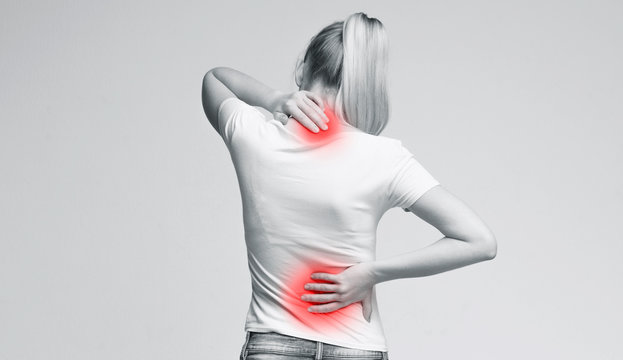Pain is a universal experience, affecting individuals across all walks of life. Whether acute or chronic, pain can significantly impair daily functioning and overall quality of life. Understanding the various treatments and techniques for pain relief is essential for managing discomfort effectively and enhancing well-being. This article explores different categories of pain relief, ranging from pharmacological options to alternative therapies, highlighting their benefits and considerations.
Types of Pain
Before delving into pain relief methods, it’s crucial to understand the different types of pain:
- Acute Pain: This type of pain is sudden and typically short-lived, often resulting from injury, surgery, or illness. It serves as a protective mechanism, alerting the body to potential harm.
- Chronic Pain: Chronic pain persists for longer periods, often defined as lasting more than three months. It can result from conditions like arthritis, fibromyalgia, or nerve damage, and may not always have a clear cause.
- Neuropathic Pain: This pain arises from damage to the nervous system and can manifest as burning, tingling, or shooting sensations. Conditions such as diabetic neuropathy and shingles are common causes.
- Musculoskeletal Pain: This encompasses pain in the muscles, ligaments, tendons, and bones, often due to injuries, overuse, or conditions like osteoarthritis.
Understanding the type of pain one is experiencing is key to selecting appropriate treatment options.
Pharmacological Treatments
1. Over-the-Counter (OTC) Medications
For mild to moderate pain, OTC medications are often the first line of treatment. Common options include:
- Acetaminophen (Tylenol): Effective for general pain relief, it is gentle on the stomach but does not have anti-inflammatory properties.
- Nonsteroidal Anti-Inflammatory Drugs (NSAIDs): Medications like ibuprofen (Advil) and naproxen (Aleve) reduce pain and inflammation. However, they can cause gastrointestinal issues if used long-term.
2. Prescription Medications
For more severe pain, doctors may prescribe stronger medications:
- Opioids: Drugs like morphine, oxycodone, and hydrocodone can be highly effective for managing severe pain, especially post-surgery or in cancer treatment. However, they carry a risk of addiction and side effects, including constipation and drowsiness.
- Antidepressants: Certain antidepressants, such as amitriptyline and duloxetine, can be effective in managing chronic pain, particularly neuropathic pain, by altering pain perception.
3. Topical Treatments
Topical pain relief options, including creams, gels, and patches, provide localized relief without systemic side effects. Common ingredients include:
- Capsaicin: Derived from chili peppers, it can help alleviate pain by depleting substance P, a neurotransmitter involved in pain signaling.
- Lidocaine: A local anesthetic that numbs the area where it is applied, often used for nerve pain.
Physical Therapies
1. Physical Therapy
Physical therapy involves a structured program of exercises and treatments tailored to improve mobility and reduce pain. Techniques may include:
- Manual Therapy: Hands-on techniques to manipulate muscles and joints, improving function and reducing discomfort.
- Strengthening and Stretching Exercises: These help restore range of motion, strengthen muscles, and prevent future injuries.
2. Chiropractic Care
Chiropractors use spinal manipulation and other techniques to alleviate pain, particularly in the back and neck. This holistic approach aims to restore proper alignment and improve overall function.
3. Massage Therapy
Massage therapy can effectively relieve tension and pain in muscles and connective tissues. Different types of massage include:
- Swedish Massage: A gentle form focusing on relaxation and circulation.
- Deep Tissue Massage: Targets deeper layers of muscle and connective tissue, often used for chronic pain relief.
Alternative Therapies
1. Acupuncture
Acupuncture involves inserting thin needles into specific points on the body to stimulate energy flow and promote healing. It has been shown to be effective for various pain conditions, including chronic back pain and migraines.
2. Meditation and Mindfulness
Mindfulness practices, including meditation and yoga, can help individuals manage pain by reducing stress and promoting relaxation. These techniques can alter the perception of pain and improve emotional responses to discomfort.
3. Biofeedback
Biofeedback is a technique that teaches individuals to control physiological processes by using sensors that provide real-time data. By learning to manage responses such as heart rate and muscle tension, individuals can reduce pain and improve relaxation.
Lifestyle Modifications
1. Exercise
Regular physical activity can play a crucial role in managing pain, particularly chronic pain. Exercise helps strengthen muscles, improve flexibility, and release endorphins, the body’s natural painkillers.
2. Nutrition
A balanced diet rich in anti-inflammatory foods can help reduce pain levels. Foods such as fatty fish, fruits, vegetables, nuts, and whole grains can contribute to overall health and potentially alleviate pain.
3. Adequate Sleep
Poor sleep can exacerbate pain perception. Establishing a regular sleep schedule and creating a comfortable sleep environment can improve sleep quality and reduce pain.
Combining Treatments
A multimodal approach—combining different treatments and techniques—often yields the best results in pain management. For instance, a patient with chronic back pain may benefit from a combination of physical therapy, medications, and mindfulness techniques.
Seeking Professional Guidance
It’s essential to consult healthcare professionals when experiencing pain, especially if it is chronic or severe. A thorough assessment can help identify the underlying causes of pain and develop a comprehensive treatment plan tailored to individual needs.
Summary
Understanding pain relief treatments and techniques empowers individuals to take control of their pain management. From pharmacological options to physical therapies and alternative approaches, a range of strategies is available to alleviate discomfort and improve quality of life. By staying informed and seeking professional guidance, individuals can navigate their pain relief journey more effectively, finding the right combination of treatments that work for them. Pain doesn’t have to dictate one’s life; with the right approaches, it can be managed, allowing individuals to live fully and actively.

